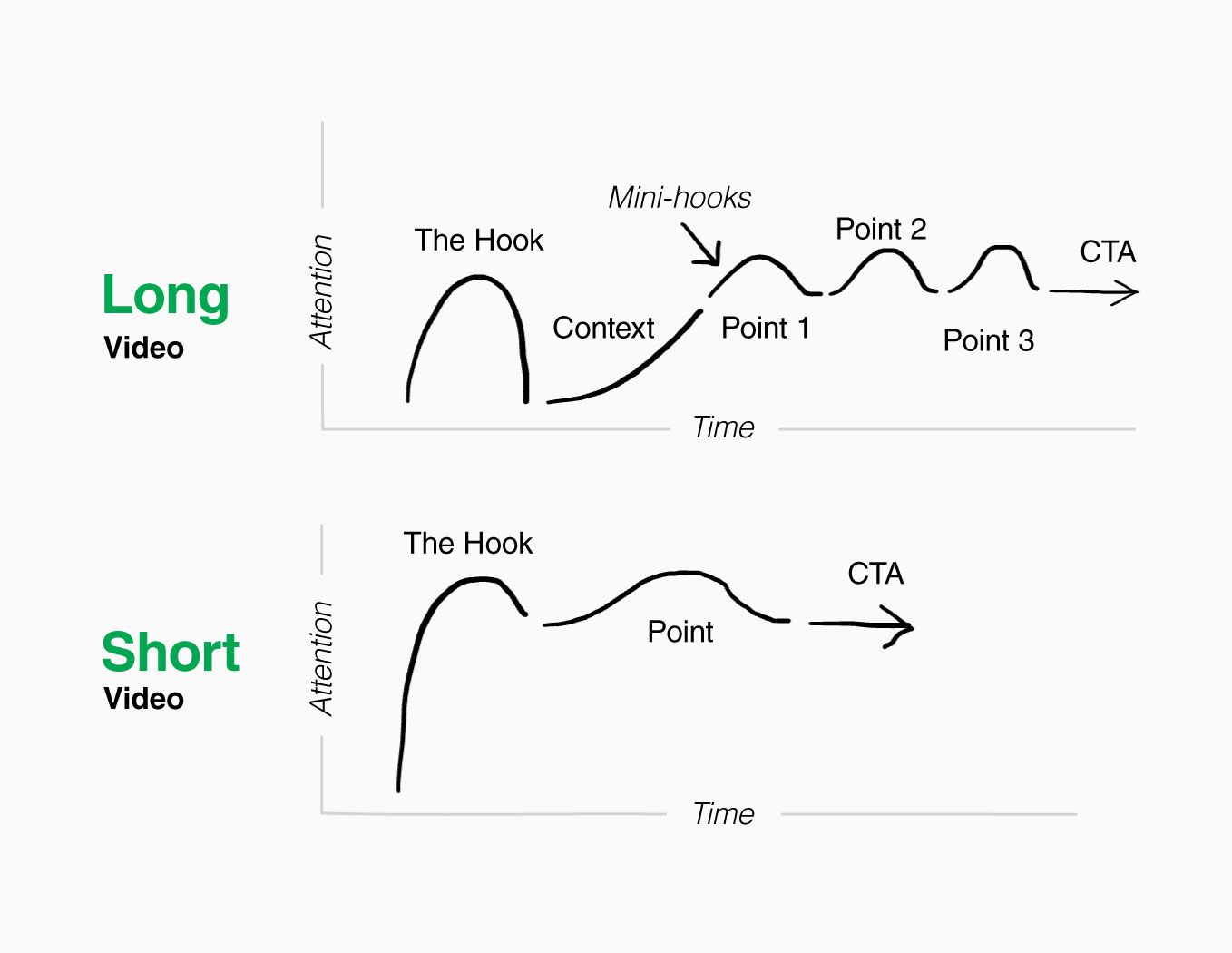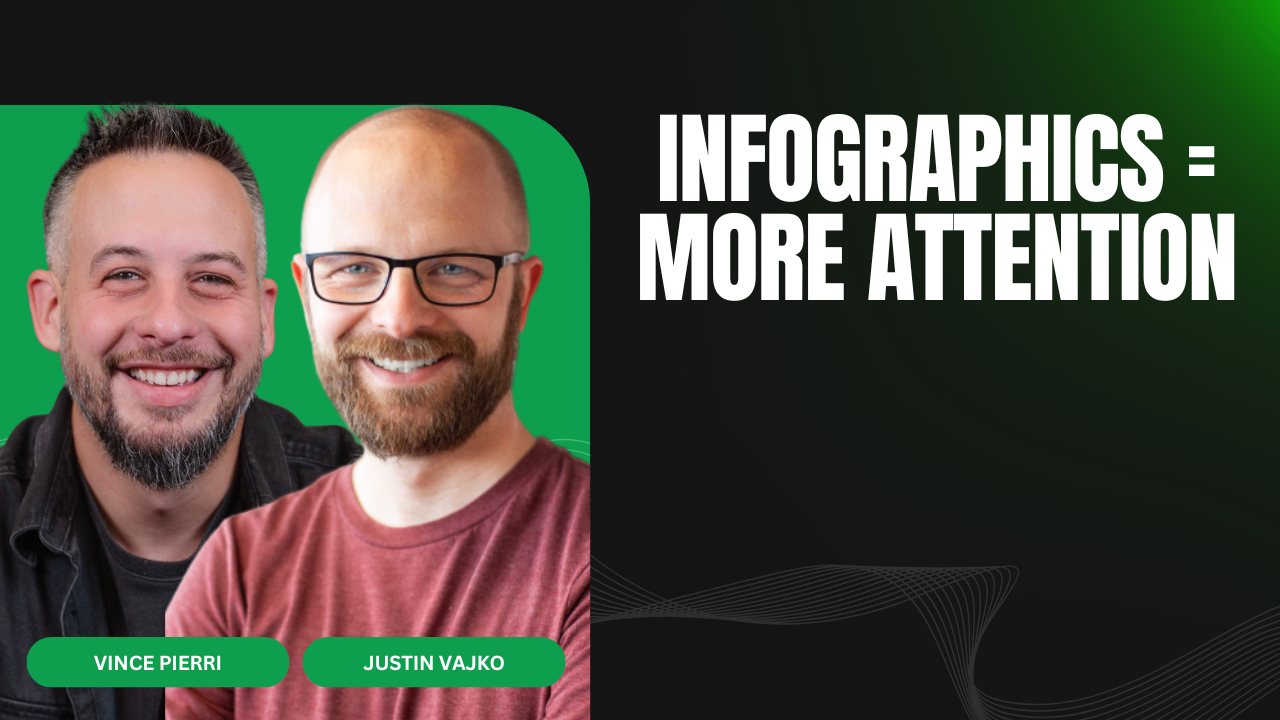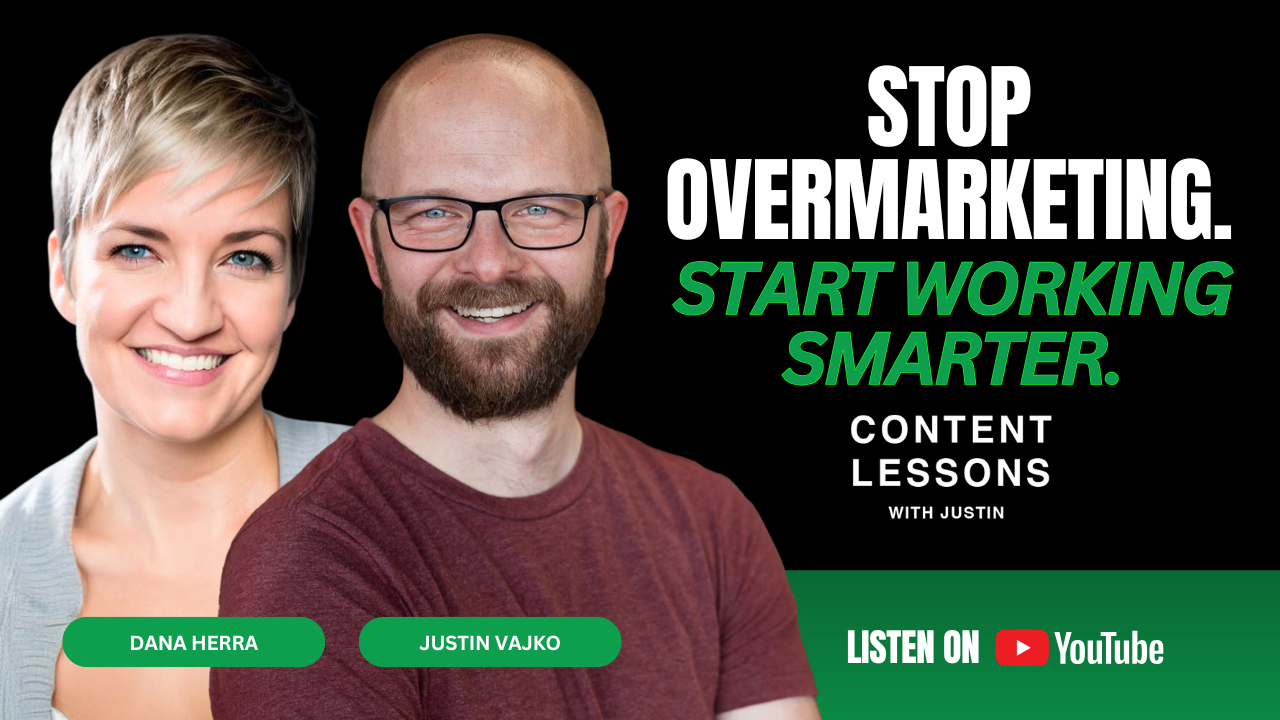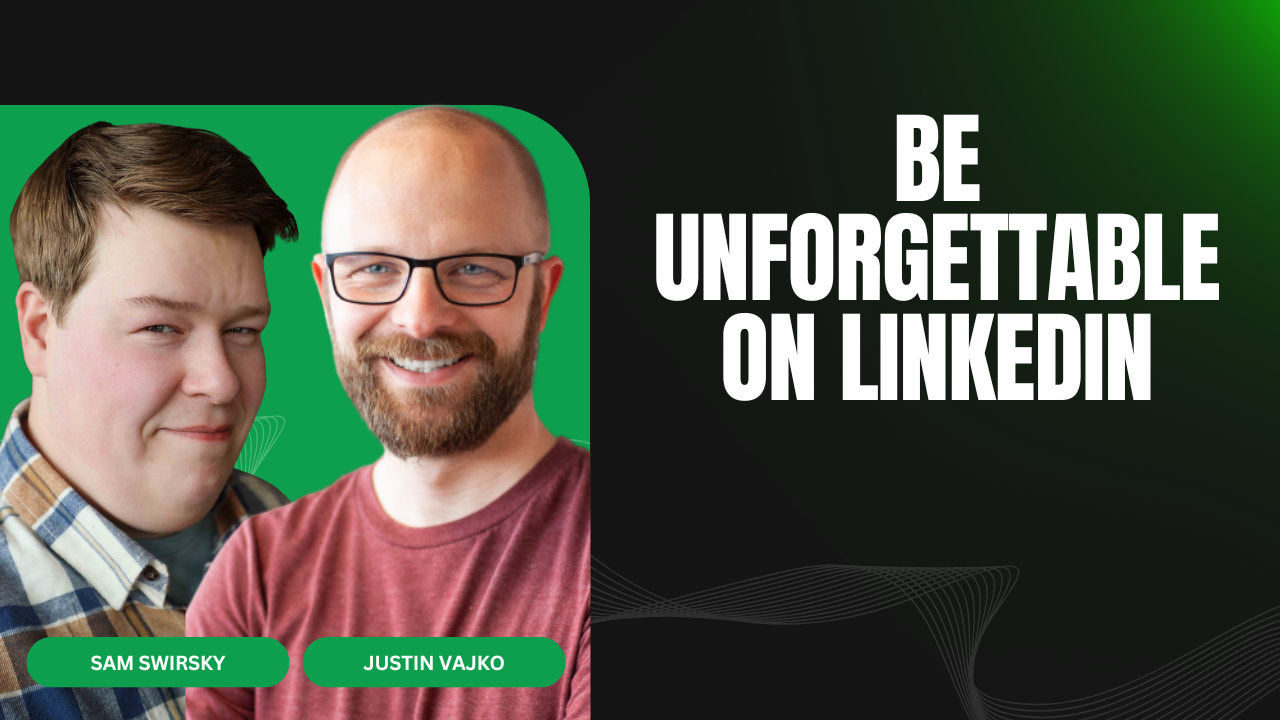Follow the attention formula for better video views
Many founders don't realize there's a formula for good video content. But it's different based on the context of the video.

We're pretty used to skim reading on LinkedIn. Or even zooming through the occasional blog post to pick up the details as quickly as possible (like this one).
But you can't really "skim read" a video. I tried it earlier today on a video about podcasting best practices. It was boring. So I skipped ahead a lot. I got absolutely nothing out of it.
This is the reason it's really tough to get views on YouTube or LinkedIn -- folks doing business want the info *now*. We're not watching videos while sitting back and sipping a martini. We have a job to do. And we want to get it over with, ASAP.
But wait -- how are some thought leadership videos getting more views than others?
Honor the story.
You've heard it said that stories sell. And it's true. We love to pay attention to stories -- and paying attention is what we're going for here with thought leadership content.
The good news is that you don't have to give a TED talk to get your ideas known by the world. Good video content isn't about being on a stage or production quality (although those can help). The core of a good video comes from honoring the story formula that humans were wired for. I've seen poorly-lit videos with questionable sound get more views than polished ones -- because they knew to keep to the formula.
The bad news is that this formula isn't always the same based on the context of the video. There's some nuance. Let's talk about that.
There's a formula for good thought leadership video content.
And it's different based on the length of the video.
For a longer thought leadership video, you typically need these parts:
- Hook/Big idea
- Establish context
- Supporting points for your point of view, each one with a short hook introduction to keep attention going.
- Moral of the story / call to action (CTA)
Basically think of any good TED talk and you've got the idea:
- Hook: I used to think burnout was a sign of weakness. Until I burned out doing something I loved...
- Context: Five years ago, I was leading a high-performing team...
- Supporting points: We confuse activity with progress... Purpose is the antidote... We can design for meaning...
- CTA: So here’s my challenge to you...
But for a short video designed for visibility with buyers on LinkedIn, the structure changes:
- Hook
- 1 point
- Moral of the story / CTA
Like a cute little TED talk. But still impactful. Especially if you're recording with shortform in mind instead of chopping up longer clips and hoping you get something good from them.
For example, check out this shortform clip from Justin. See if you can notice the three story points listed above.
Why the formula changes (it's not what you think).
Here's the reason why the story structure changes in a long video versus a short video (and it has nothing to do with the length of the video):
On a website or YouTube, you know what the video entails BEFORE you click on it because of the title and thumbnail. You're ready to sit for a few minutes to learn something new. You might be watching the video while you eat breakfast or do the dishes.
But when you're on Linkedin or YouTube Shorts, there's no thumbnail. You're swiping. And the video auto-plays.
Which means short videos are completely dependent on a strong hook and quick point to get you to watch. (Yes, I know they can have thumbnails too but they're not discovered that way, they're 99% watched via someone swiping.)
Both need the hook to be successful.
Things like:
- Why 99% of [audience] will never achieve their goal.
- How I built [outcome] with [limitations].
- You’ve been lied to about [topic].
The problem is, most of us don't "talk" in hooks. So we forget this part and rely on charisma alone to get the video seen.
Which hurts views.
If hooks are tough for you (like they are for most of us),
check out my free video training. There's a link to a Google Doc inside that has 97 and a half hook inspirations. These are the same ones I use for inspiration in my videos and posts.

About Justin
Justin is a marketing nerd. His gateway drug was in middle school when he and his buddies would make up brand names and draw logos for fun. He graduated with a B.A. in Graphic Design from UW Eau Claire. He then cut his teeth leading the marketing for a $4 million non-profit, moving them into the digital age with new channels and systems. He joined a $60M healthcare manufacturer as marketing team of 1, helping grow them to $90M in three years. Justin became a full-time marketing entrepreneur in 2018. He now enables founders to grow their pipeline and thought leadership through social media videos. Follow him on Linkedin here.




